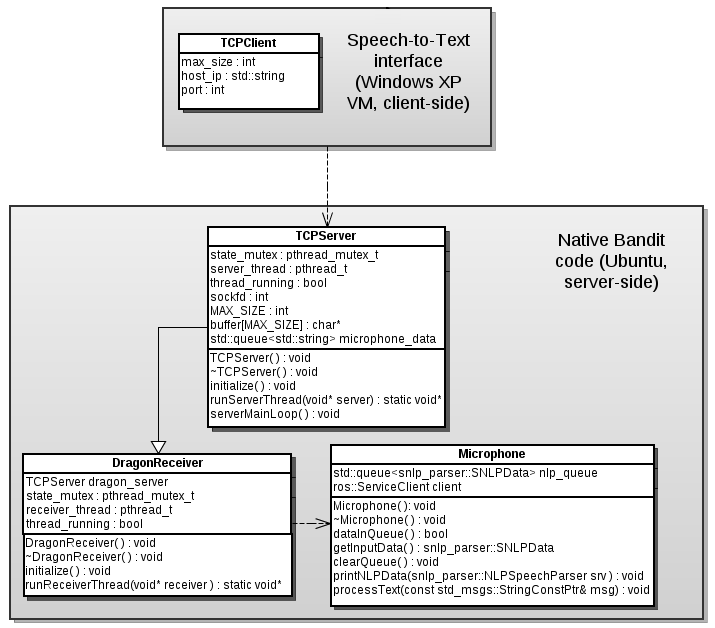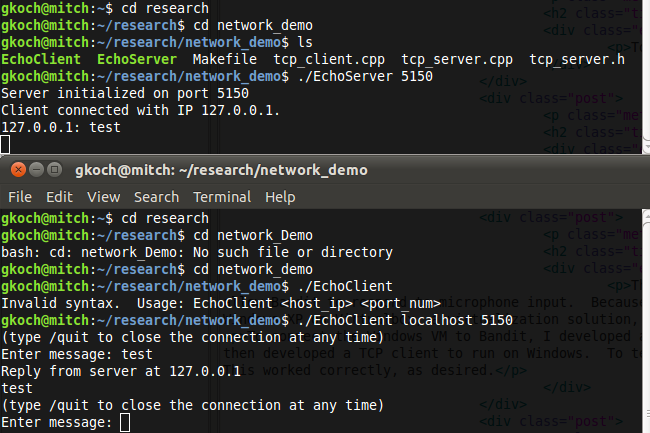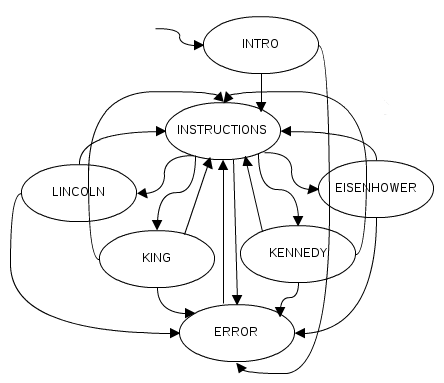With stopText in place, my current goal is to figure out an efficient algorithm to interpret the correct stopping for Bandit's speech module. That is, when Bandit is stopped, how can we determine the approximate character in the string being spoken at which the .wav file cut off? If Bandit is to appropriately and naturally resume what he was saying before mid-sentence, a good method will have to be implemented.
Currently, I have two possibilities that I have been testing:
Algorithm #1 - Get the percentage of the .wav file played, and multiply that percentage by the total length of the string that Bandit was asked to read. This works by computing numOfCharsInString*(stopTime/totalTime). To get this information, I implemented a function called getSoundDuration, which takes a pointer to a SoundFile struct as a parameter (SoundFile structs use the SDL_Mixer library). This returns the total time in seconds. However, because SDL_Mixer does not support tracking elapsed time of an audio chunk, I implemented a small timer using the Utils class already provided in the Bandit shared libraries (jpshared).
The result of this method will be a double, which I can round to the nearest int in order to use with std::string::at, then generate a substring from there to determine which text Bandit should speak upon restarting.
- Initial results: The algorithm worked surprisingly well on the first test runs, identifying the correct word stopped on within five characters even with strings spanning several sentences. However, when long passages were presented, inaccuracies increased by up to two dozen characters, an unacceptable margin. I conclude that this algorithm provides a good general approximation, but falls prone to pauses because individual sentences over extended durations of speaking.
Algorithm #2 - Get the percentage of the .wav file played, and multiply that percentage by the total length of the current sentence that Bandit was asked to read. This works by computing numOfCharsInCurrentString*(stopTime/totalTime). To get this information, I implemented a function called getSoundDuration, which takes a pointer to a SoundFile struct as a parameter (SoundFile structs use the SDL_Mixer library). This returns the total time in seconds. However, because SDL_Mixer does not support tracking elapsed time of an audio chunk, I implemented a small timer using the Utils class already provided in the Bandit shared libraries (jpshared). The current sentence can be determined from the LipSync lip timing command array.
Because lip movements are pregenerated and stored in an array, it is easy to read this array to figure out which sentence in the current passage Bandit is reading. Lip movements are stored as positive or negative integers, depending on whether the mouth is open or closed. Because the mouth only completely closes between sentences, using these lip movements provides an easy way to determine which sentence is being read. From there, it is not hard to generate a substring from the original string containing only the current sentence. By taking the length of this substring, the number of characters in the current sentence can be determined. This should be at least a slightly more accurate method than Algorithm #1, because it does not vary as a function of string length, but remains relatively constant no matter which string is being read.
The result of this method will be a double, which I can round to the nearest int in order to use with std::string::at, then generate a substring from there to determine which text Bandit should speak upon restarting.
- Initial results: The algorithm worked surprisingly well on the first test runs, identifying the correct word stopped on within five characters even with strings spanning several sentences. However, when long passages were presented, inaccuracies increased by up to two dozen characters, an unacceptable margin. I conclude that this algorithm provides a good general approximation, but falls prone to pauses because individual sentences over extended durations of speaking.
From these results, it seems like the second algorithm is the correct approach, but I will spend another day or so seeing if I can't think of any alternatives before I commit to using the algorithm in my resumeText function.



